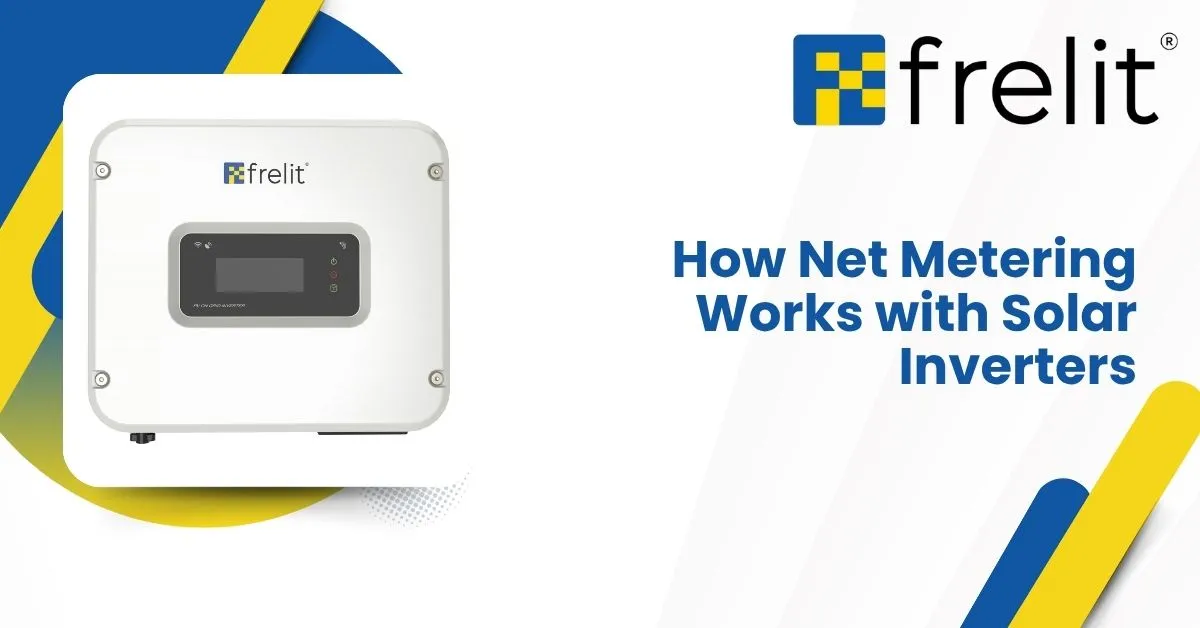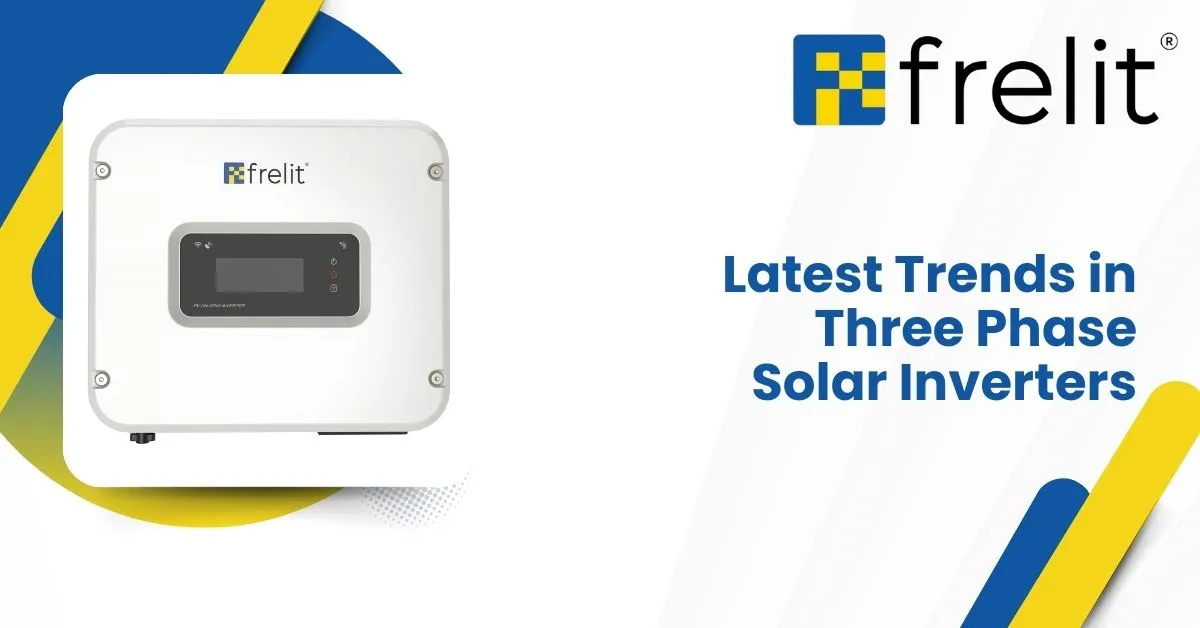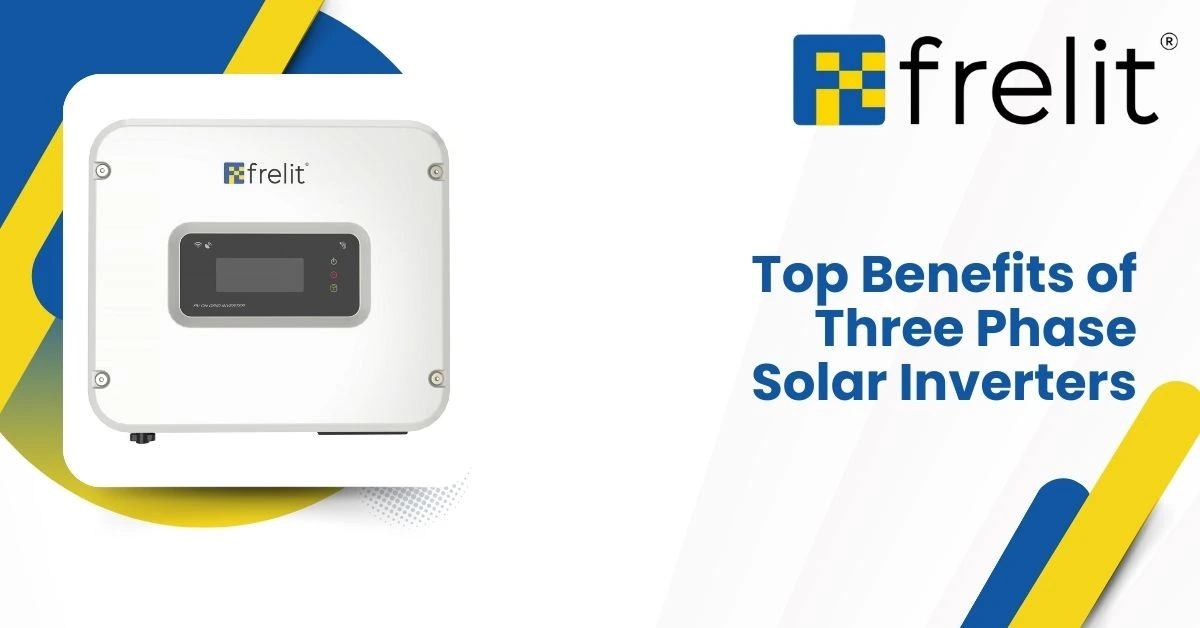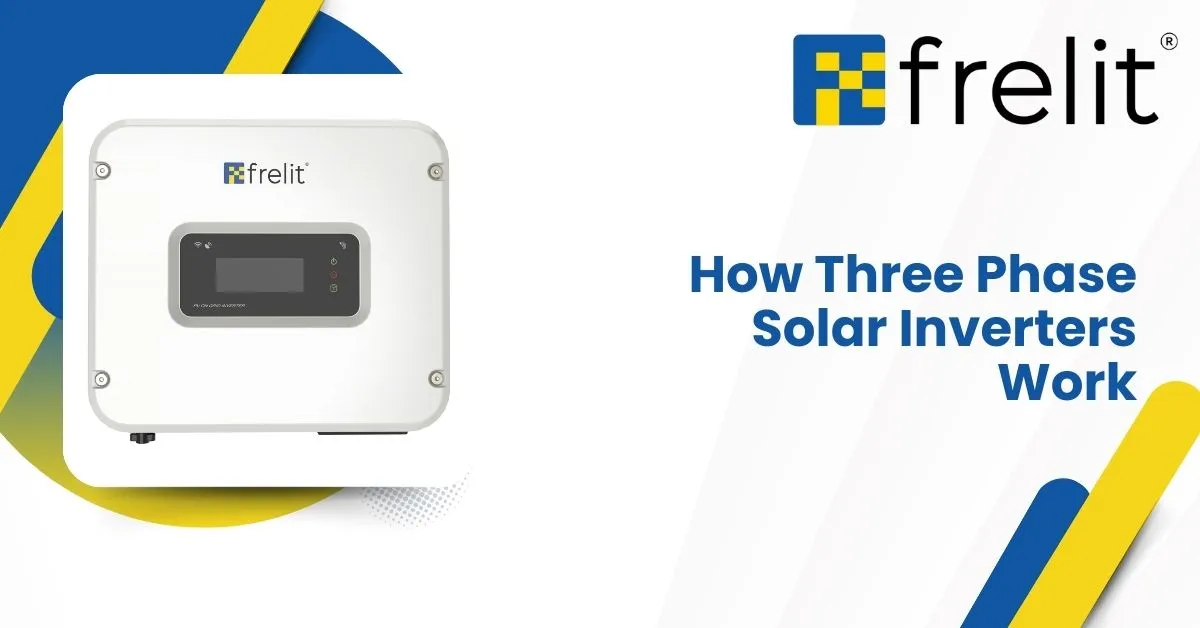
As solar energy adoption continues to grow across India, solar inverters and net metering systems are becoming essential components of modern solar power setups. Together, they help homeowners and businesses not only generate clean energy but also save significantly on electricity bills. Understanding how net metering works with solar inverters is crucial to maximizing solar energy savings and achieving long-term sustainability.
What is Net Metering?
Net metering is a billing mechanism that allows you to send excess solar power generated by your solar panels back to the electricity grid. When your system produces more power than you consume, the surplus energy is exported, and your electricity provider gives you credits for it.
Later, when your system produces less energy (like during night hours or cloudy days), you can use those credits to offset your electricity consumption. This system ensures you pay only for the net energy you use — hence the name net metering.
Role of Solar Inverters in Net Metering
The solar inverter is the key component that enables net metering to function. Solar panels generate DC (Direct Current) power, but your appliances and the electricity grid use AC (Alternating Current) power. The solar inverter converts DC to AC and synchronizes it with the grid’s voltage and frequency.
In simple terms, the inverter acts as the bridge between your solar power system and the utility grid. It ensures that your solar energy is safely exported when there’s excess and drawn back when needed — enabling a seamless net metering process.
How to Works Net Metering with Solar Inverters?
Here’s a simple breakdown of how the process works:
- Power Generation:
Solar panels generate DC electricity from sunlight. - Conversion by Solar Inverter:
The on grid solar inverter converts this DC power into AC power compatible with the electricity grid. - Power Utilization:
The generated AC power first runs your home or business appliances. - Excess Power Export:
If your solar panels produce more energy than you consume, the inverter sends the surplus back to the utility grid through the bi-directional net meter. - Energy Credits:
Your electricity company records the exported energy and credits it against future consumption. - Power Import:
During night hours or low sunlight periods, you draw electricity from the grid. The energy credits reduce your bill based on how much solar power you exported earlier.
Want to save more with solar? Contact us today for expert guidance, advanced solar inverters, and professional installation services for your net metering system.
Benefits of Using Net Metering with Solar Inverters
1. Significant Electricity Bill Reduction
The biggest advantage of net metering is reduced power costs. Your exported energy compensates for what you use later, leading to massive savings over time.
2. Faster Return on Investment
Combining solar inverters with net metering allows you to earn credits or even eliminate monthly power bills, helping recover your solar system investment faster.
3.Grid Reliability
With a grid-tied solar inverter, your system stays connected to the grid, ensuring stable power supply without interruptions.
4.Eco-Friendly Energy
By feeding renewable energy back into the grid, you contribute to reducing carbon emissions and promoting sustainability.
5.Smart Monitoring and Control
Modern on grid solar inverters come with smart monitoring systems that let you track energy generation, export, and savings in real-time.
Types of Solar Inverters Compatible with Net Metering
1.On Grid Solar Inverters
These are specifically designed for net metering systems. They connect your solar setup to the grid, enabling energy export and import seamlessly.
2.Hybrid Solar Inverters
These inverters combine grid connectivity with battery backup. You can store excess energy and still benefit from net metering credits.
3.Three Phase Solar Inverters
Used for large-scale commercial or industrial applications, these manage high loads and ensure grid stability while maximizing energy export efficiency.
Net Metering System Requirements in India
If you plan to install a solar inverter for home or industry with net metering, here’s what you’ll need:
- On grid or hybrid solar inverter
- Bi-directional smart meter (net meter)
- Government or utility approval
- Proper wiring and system synchronization
Most Indian states now have clear net metering policies. Ensure your installation follows local guidelines for seamless operation and billing.
Solar Inverter Price in India 2025
As of 2025, the solar inverter price in India ranges based on type and capacity:
| Type | Capacity | Average Price Range (INR) |
|---|---|---|
| Single Phase On Grid Inverter | 2–6 kW | ₹20,000 – ₹60,000 |
| Three Phase On Grid Inverter | 7–15 kW | ₹70,000 – ₹2,00,000 |
| Hybrid Solar Inverter | 5–15 kW | ₹80,000 – ₹2,50,000 |
Prices are becoming more affordable, and with government subsidies, switching to solar is more economical than ever.
How to Maximize Benefits of Net Metering
- Install a High-Efficiency Inverter: Choose a solar inverter with high conversion efficiency (above 97%) to maximize energy output.
- Monitor Regularly: Use smart monitoring apps to track performance.
- Size Your System Correctly: Match your inverter size with solar panel output for optimal results.
- Clean Solar Panels Frequently: Keep panels dust-free for maximum sunlight absorption.
- Comply with Local Policies: Follow DISCOM and state net metering rules for smooth billing.
Frequently Asked Questions
What is net metering in solar energy?
Net metering is a system that allows you to send excess solar energy produced by your panels back to the grid and receive credits. These credits offset your electricity usage, reducing your overall bill.
How does a solar inverter work with net metering?
A solar inverter converts DC power from solar panels into AC power for home use. When production exceeds consumption, the inverter sends surplus energy to the grid via a bi-directional net meter, earning energy credits.
What type of solar inverter is best for net metering?
On-grid or hybrid solar inverters are best for net metering. They synchronize with the grid and allow both export and import of electricity efficiently.
What are the benefits of using net metering with solar inverters?
Net metering helps reduce electricity bills, ensures better return on investment, and supports a sustainable energy future by sending clean energy back to the grid.
Can industries use net metering with solar inverters?
Yes. Three-phase solar inverters are widely used in industries to manage high energy loads and ensure stable grid connectivity under net metering policies.
Conclusion
Net metering with solar inverters is one of the smartest ways to make solar energy work for you. It not only minimizes your energy expenses but also helps the nation move toward a sustainable future. Whether you’re using an on grid solar inverter for your home or a three phase solar inverter for industrial use, understanding net metering can help you unlock the full potential of solar power.



